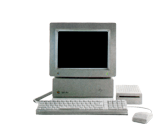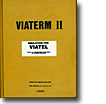ViaTerm II
Your Rating: Not Yet Rated
Average Rating: Not Yet Rated
RAM Requirement: 256k
Control: Keyboard
Release Status: Abandonware
Year: 1987
Publisher: Bizap
Developers: Paul Zabrs
System 6 Compatible: No
Hard Drive Installable: No
 Download the manual in PDF format (3847k)
Download the manual in PDF format (3847k)
All ebay results related to this archive:
No Results for 'ViaTerm II' for the Apple IIGS available on Ebay
Current Apple IIGS related Auctions Listed By Time Left:
Vintage Software Apple II IIe IIc IIgs RUSSIA The Great War in the East
LEGO TC Logo - Super Rare DACTA - APPLE IIe & IIgs - Interface Card & Cable 9767
Apple ADB Touchpad Mouse Mice Replacement for G5431 m1042 M2706 A9M0331 IIGS IIe
Phonics Prime Time 1.0 by MECC for Apple II+, Apple IIe, Apple IIc, Apple IIGS
Sound Tracks 1.0 by MECC for Apple II+, Apple IIe, Apple IIc, Apple IIGS
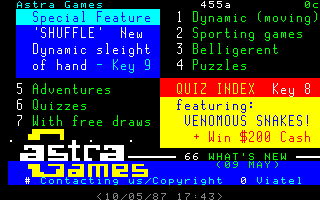
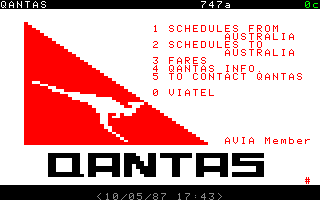
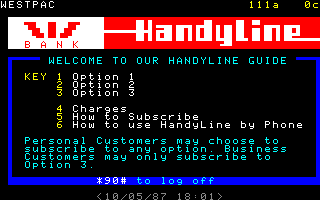
ViaTerm II may well have been the first IIGS specific communications program developed and ironically, it's the last one to be archived.
This rarity was only released in Australia to use with Telecom's (now Telstra) ViaTel service. ViaTel was a VideoTex service, an early protocol for two way terminal based communication (Teletext was the variation built into the TVs that allowed only 1-way communication i.e. data sent to your TV along with broadcast channels you'd pick up via an aerial/antenna). The MiniTel system deployed in France showed the greatest uptake of VideoTex, as terminals were provided to homes in France for use if those home no longer received the white pages directories, therefore saving printing and distribution costs for years to come.
So in theory, perhaps, ViaTerm II could have been used as a MiniTel client (as an alternative to ShadowDial). We're not likely to know anymore, as MiniTel was retired in 2012. Is anyone running a VideoTex service via the internet? A quick Google search has revealed nothing for me.
In any event, ViaTerm II was to access ViaTel in Australia and of course that service was wound up by the '80s, but not after being renamed 'Discovery 40', based on the number of columns of text available. ViaTerm II perfectly makes use of 320 mode super hi-res graphics mode of the IIGS to perfectly emulate VideoTex and its 40 columns of coloured text and blocks that could form low resolution graphics. 'Discovery 80', using 80 columns of text, must have been similar to ANSI terminal specs, for which the IIGS has to compromise by using the 640 super hi-res graphics mode, where the resolution can achieved but colours can only be dithered or potentially stick to 320 mode, but have text characters not as well defined with the lower resolution.
Other interesting notes about ViaTerm II is that it uses its own operating system, presumably to meet the rather conservative memory requirement of 256k, and leave as much memory as possible to run the program and allow for a reasonable amount of scroll back. If more memory is found, scrollback can be greatly enhanced - at 256k only 24 screens can be recalled, with 512k 168 screens be found and at 1.25meg, 672 screens can be called back. You could also save screens for later reference, which is great and really the only way we can see how the IIGS handled terminal emulation with the provided examples already saved on disk. Recalling saved screens can be done with open apple-L, which is how screen grabs were obtained. Thankfully, along with the disk image provided by Andrew Roughan and cracked by Antoine Vignau, Andrew's also been able to scan the short but concise manual, as well as the plastic case the software was packaged in and the disk label.
